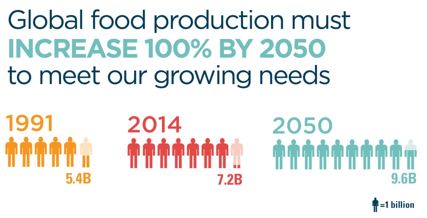



Enzymes Are Key Piece of Puzzle to Feed the 9 Billion
ANALYSIS - How do we feed the world’s future population and the growing global demand for protein?A key part of the answer is through unlocking efficiency of feed ingredients and in lowering the challenges of anti-nutrients found in some non-traditional feedstuffs, writes Dr. Ajay Bhoyar, senior manager, Global Poultry Marketing.

Enzymes have proven their potential to not only release more nutrients from conventional and non-conventional feed ingredients, but also in significantly lowering the negative effects of anti-nutrients present in these raw materials.
Enzymes will act on their particular substrates and will exhibit full results, whether used independently or in combination. When used in combination, additional benefits may be seen apart from energy, mineral and individual amino acid release. Phytase, protease and xylanase are three popular feed enzymes used in the animal industry today.
- Releasing phosphorus from phytate with a phytase enzyme reduces the environmental load and also reduces the cost of feed, as other sources of phosphorus are then required at lower levels.
- Higher levels of insoluble fiber speed the passage of nutrients through the gut, reducing the potential for absorption. Xylanase lessens this effect and supports the greater use of raw materials with lower nutritional value, thereby increasing the flexibility of feed formulation and reducing feed cost.
- Protease lowers the risk associated with poorly balanced feed formulation and variation in the nutritional quality of feed ingredients. Protease also allows for the use of lower quality raw materials at higher inclusion rates.
Utilization of feed enzymes has emerged as the potential solution for sustainable animal production. Enzymes bring value when used singularly and that value can be even more profound when the enzymes are used in combination.
Enzymes not only help to increase the availability of costly nutrients, but also support animal performance by way of reduced damaging effects of anti-nutritional factors, in turn contributing to reduced animal production costs.
To learn more about Novus International’s family of enzyme solutions, visit www.novusint.com/products/cibenza.









